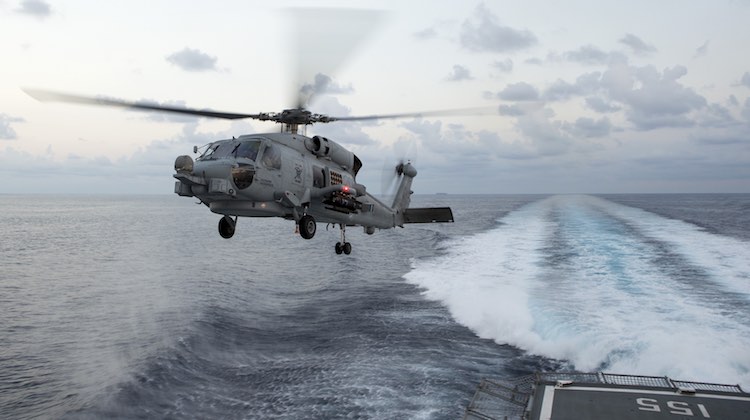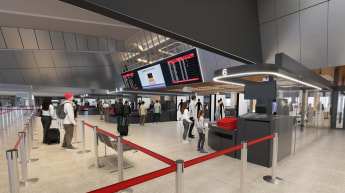 The Royal Australian Navy has achieved a milestone of 10,000 flying hours with its 24 strong MH-60R Seahawk ‘Romeo’ fleet.
The Royal Australian Navy has achieved a milestone of 10,000 flying hours with its 24 strong MH-60R Seahawk ‘Romeo’ fleet.
Chosen in 2012 to replace the S-70B-2 Seahawk ‘Bravo’, the Romeo has enjoyed a smooth introduction to service with the RAN thanks in part to a deep level of training support from the US Navy, and because of its relative commonality to the Bravo.
This rapid maturity was enabled by the establishment of the 725 Squadron at NAS Jacksonville in Florida in late 2013 to transition to the Romeo and to train the first cadre of crew and maintainers. With the relocation of 725SQN to HMAS Albatross at Nowra in 2015, the gradual ramp of Romeo operations allowed the draw down of the Bravo fleet, a process which should be complete by the end of 2017.
“The fact that our Navy has achieved it in less than four years since commencing flying the type, while continuously accepting new aircraft, standing up new flights and progressing through the various transitions is a testament to the talent and professionalism of all involved with the Romeo helicopters,” Commander Fleet Air arm CDRE Chris Smallhorn told Navy News.
“The MH-60R has provided the Navy with a quantum leap in warfighting capability with a range of advanced sensors, potent weapons and improved integration across the maritime domain,” he added.
“The strength of a Task Group is underwritten by the manner in which the capability elements integrate as one, and Navy is taking great strides in exploiting the impressive warfare capabilities of the MH-60R weapon system.”
MH-60Rs have been employed on five operational ‘flights’ to date, while a sixth is currently being stood up.
Despite their similarities in their airframe and dynamic components, the Romeo features vastly enhanced cockpit and combat systems, a Thales dipping sonar, a high-end electronic warfare suite, and the ability to employ Hellfire anti-surface missiles and the Mk54 anti-submarine torpedo.
















B. Harrison
says:I wonder if Army and Navy are regretting buying that European helicopter “equipment” when they could have had Seahawks, Blackhawks and Apaches that actually work after you buy them. The whole plan of having fewer helicopter types is in tatters because of the initial choices made. 50-75 Blackhawks (12-15 navalised for amphibious Ops) 24 Seahawks (currently in use) 24-30 Apaches (same engines as Blackhawk?) 12-15 Chinooks and 30-50 training/utility choppers would have been ideal and would have all been fully operational by now.
Random
says:@B.Harrison
I think you’ll find the politicians are equally if not more culpable than the Services at times.
The politicians give Defence no choice in some instances and even over-rule Service advice.
When the old maxim “full capability on time on budget” is given no more primacy in political procurement assessments than factors like local build, marginal electorates, foreign and diplomatic relations then you are likely to get mixed results.
It’s no wonder FMS buys like Romeo and Super Hornet are popular- they short circuit and circumvent most of the ways you can politically mess with procurements.
Giles
says:Great news story. After hearing so many poor reports about Australias underdeveloped european helicopter fleet its good to see a product delivering on what it has been promoted to do.
Question: does anybody know of a link to see ‘cost’ of operation comparisons between each of the adf helicopter types?
Jackspeak
says:Planned 7200 AFHRs ROE per annum vs 10,000 hours for 4 years…..
ULISES VELEZ
says:BRAVO ROMEO!